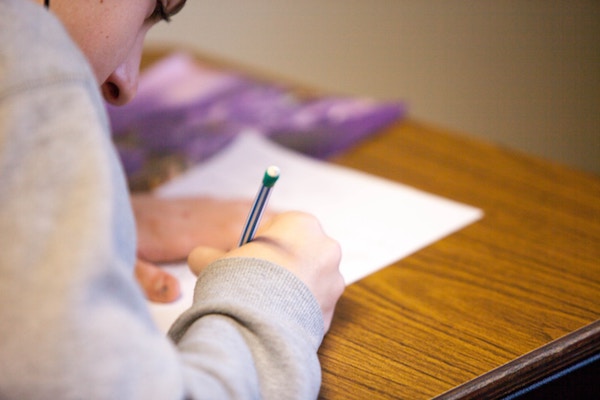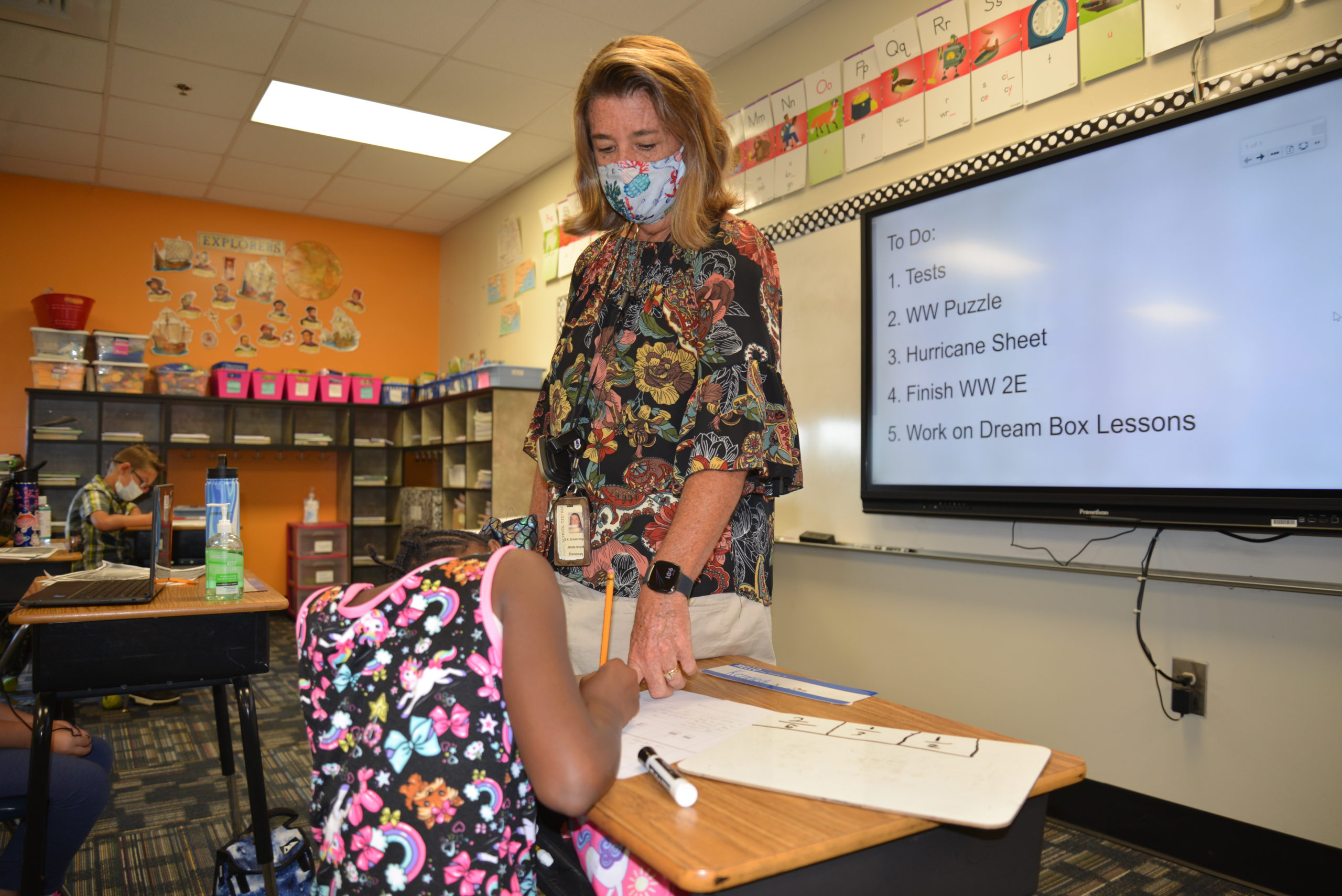5 ways schools can accelerate learning to get students back on track
As educators and parents have come to realize the sheer amount of student progress wiped out by school closures and remote instruction, schools have been working hard to overcome the learning loss. But more often than not, their approach overemphasizes diagnosing knowledge gaps and reteaching below-grade-level material. While remediation is how schools typically address learning gaps, it’s not enough on its own.
Instead, schools need to shift the focus from remediation to acceleration.
What is acceleration?
Acceleration is a teaching strategy that increases and speeds up students’ exposure to grade-level learning. It requires students to consistently work on grade-appropriate tasks.
For some educators, that might sound counterproductive. Shouldn’t teachers reteach the content students missed from previous years to close learning gaps?
However, recent research shows that while well-intentioned, remediation sets learners even further behind. For the educators, students, and parents involved, it creates misguided beliefs that learners can’t meet grade-level expectations.
As a community, we can reframe our approach and help students move forward.
5 tips for accelerating student learning
Here are five research-backed strategies educators can use to put every student on a fast track to grade-level learning.
1. Prioritize content that is essential for future learning
The key to acceleration is keeping students engaged in grade-level content. Rather than focusing solely on remediating old material, schools should prioritize advancing learners through new concepts.
That said, it’s important to recognize that some topics require students to have foundational knowledge before moving on to new material. Without mastery of addition and subtraction, for instance, students will have trouble solving complex multiplication and division problems effectively.
As such, educators must find a balance between reteaching prerequisite content and exposing students to new and challenging concepts. The key is to prioritize the most critical building block skills.
Take these steps to ensure that students are comfortable accessing grade-level material:
-
- Identify the most critical prerequisite standards and skills. Begin by looking closely at the standards and topics covered in each subject area and grade level. Then, determine the must-have skills that will enable students to learn this content efficiently. Ideally, this process should be done collaboratively with district-level curriculum teams to ensure consistency and inclusivity.
-
- Use assessment data to identify learning gaps. After deciding on the essential skills, leverage diagnostic and formative assessments to identify which students need additional support with the skills that require the most attention.
- Determine an action plan. After identifying key learning gaps to target, set clear goals for your staff. Plan when and how your teachers will address these missed standards without pulling students out of grade-level instruction. This will vary by campus depending on staff capacity and student body size, but could involve high-dosage tutoring or identifying extra instructional time within existing schedules.
2. Personalize instruction for each student
Not all learning loss is equal. While the pandemic affected every student, it didn’t affect every student equally. In particular, low-income families and students of color were hit the hardest.
Research on learning loss reveals that the pandemic only exacerbated the existing gap between the nation’s highest- and lowest-performing groups. Those that were already falling behind—students in high-poverty schools, Black and Hispanic students, and special needs students—also suffered the most academic disruption.
To overcome the inequitable impacts of learning loss, educators should strive to give all students access to grade-level content. By differentiating instruction to meet the unique needs and abilities of each learner, teachers can help all students succeed at grade level.
Here are a few strategies educators can use to personalize instruction:
-
- Understand your students. Every teacher and instructional staff should work to understand each of their student’s learning styles, strengths, and weaknesses. This allows instructors to discover the best approach for teaching each student.
- Provide opportunities for student choice. Empower students by providing a variety of learning activities, such as collaborative work or gamified learning. Allowing individuals to choose how they want to learn can make them feel more invested and help them engage in the material in a way that suits them.
- Leverage technology to personalize learning. Digital learning platforms can streamline differentiation by providing each student with adaptive instruction and individualized feedback on grade-level material. When integrating technology, ensure that all students have equitable access to digital devices and the internet.

3. Monitor student progress and adapt instruction regularly
Throughout the school year, educators should monitor how students are progressing on grade-level content and adjust lessons accordingly.
Teachers can inform their instruction by building frequent, low-stakes formative assessments into their routine. Using an informal assessment such as an exit ticket or pre-assessment, they can identify the students who need more help on a building block skill before moving on to grade-level content. With this feedback, instructors can then provide a quick review to a small group of students while allowing others to move on.
Additionally, teachers can leverage available data to evaluate if their current teaching strategies are working. For example, teachers can analyze test scores or use online learning platforms to track student progress and determine if changes need to be made. The earlier teachers spot that students are struggling, the earlier they can provide support.
As an administrator, you should regularly check to see if your staff is implementing your action plan effectively. Using data from benchmark assessments or screeners, you can track progress toward academic goals and identify where your strategy may need to be adjusted.
4. Give teachers the resources they need to help students
Supporting students starts with supporting teachers. Experts agree that effective teachers have one of the biggest impacts on academic success and individual outcomes, compared to other school-based resources.
District and school leaders who want to foster student success must provide instructors with the resources they need to be effective educators. And the most important resource teachers need is time—time to identify the essential skills, time to develop the assessments, and time to plan the lessons.
While we can’t add more hours to the day, we can definitely help teachers manage their workload better. For example, teaching assistants can handle administrative tasks, and paraprofessionals can provide tutoring and extra instructional support for students. And digital platforms can remove paperwork, streamline assessments, and even take care of lesson planning for teachers so that they can actually focus on teaching.
In addition to providing support, consider investing in ongoing professional development opportunities to help educators stay on top of the latest teaching techniques to address learning loss. And if your schools are already using educational technology, work to provide your staff with best practices for implementation.
Ultimately, you’ll want to ensure that your staff has all the time, skills, and tools needed to implement your acceleration strategy.
5. Bring students and families into the conversation
As important as quality educators and carefully crafted academic plans are, students and their parents are at the core of student outcomes.
Here are some practical tips for inviting families to collaborate and help learners get back on track:
-
- Have honest conversations. Educators need to be more transparent with parents about pandemic learning loss. If parents clearly understand that their child is struggling, they’re more likely to be engaged. Keep families informed about their child’s progress and give them visibility into how your campus is working to accelerate learning.
- Help parents help teachers. Parents want to help, but schools need to provide them with the necessary tools to do so. Give families access to online learning platforms and tutoring services, or share lesson plans and homework assignments with them so they can keep their children on track. If your staff has the capacity, consider creating webinars for parents to learn effective ways to reinforce learning at home.
- Include students in discussions. Including students in these conversations gives them a clear picture of their progress and empowers them to take an active role in their own learning.
The road to academic recovery is long and can be difficult for teachers to navigate alone. Instructors need time and resources, but also collaboration and support from fellow educators, students, and parents. After being forced to stay six feet apart from each other for so long, it’s time to come together closer than ever to help our learners bounce back.
Empower your district with research-proven strategies
There’s no time to waste. To overcome years of learning loss, educators have to focus on acceleration strategies that work—which is why so many school leaders turn to IXL.
Our K-12 learning and teaching platform is not only research-based, but also research-proven to accelerate learning. With adaptive skills, a full assessment suite, district-wide data, and more, IXL gives you all the tools and insights you need to facilitate success for every teacher and student in your district.
See the research that shows how IXL is helping districts like yours succeed.






